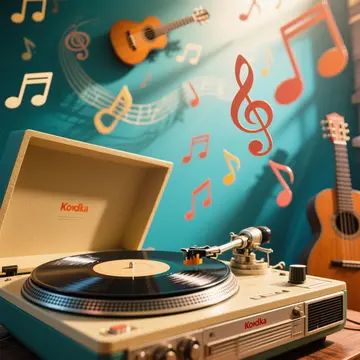
In the era of artificial intelligence, musicians and producers are increasingly leveraging AI to enhance their creative processes. Training an AI model on your unique music style allows you to generate original compositions that resonate with your artistic identity. This guide will walk you through the essential steps to create a custom AI music model, from data preparation to model fine-tuning.
1. Prepare Your Music Dataset
The foundation of training an AI model lies in having a high-quality, diverse dataset that represents your music style. Start by collecting all your original tracks, demos, and musical fragments. Include various elements such as melodies, harmonies, rhythms, and lyrics if applicable. Aim for at least 10-20 hours of audio content to provide sufficient training material.
Organize Your Data
Structure your dataset by genre, tempo, key, and instrumentation. Create separate folders for different musical components (e.g., vocals, guitar riffs, drum loops). This organization helps the AI recognize patterns specific to your style. Use metadata tagging to label each track with relevant attributes like mood, song structure, and musical influences.
Ensure Audio Quality
Convert all audio files to a consistent format, such as WAV or FLAC, with a sample rate of 44.1kHz or higher. Remove any background noise or imperfections using audio editing software like Audacity or Pro Tools. High-quality audio ensures the AI can accurately analyze and learn from your musical nuances.
2. Choose the Right AI Model
Selecting an appropriate AI model is crucial for capturing your music style. Here are some popular options:
Recurrent Neural Networks (RNNs)
RNNs, including Long Short-Term Memory (LSTM) networks, are excellent for processing sequential data like music. They can learn the temporal relationships between musical notes and generate coherent melodies and chord progressions. Tools like TensorFlow and PyTorch offer pre-built RNN architectures that you can adapt for music generation.
Generative Adversarial Networks (GANs)
GANs consist of a generator network that creates new music and a discriminator network that evaluates its authenticity. This adversarial training process can produce high-quality music that closely mimics your style. However, GANs are more complex to train and require significant computational resources.
Transformers
Transformers, popularized by models like GPT, have shown promise in music generation. They can handle long-range dependencies in musical structures and generate diverse compositions. Libraries like Hugging Face's Transformers provide pre-trained models that you can fine-tune on your dataset.
3. Preprocess Your Data
Audio to Symbolic Representation
For melodic and harmonic analysis, convert audio files into symbolic representations such as MIDI or MusicXML. These formats encode musical notes, durations, and velocities, making it easier for the AI to process the structural elements of your music.
Lyric and Text Processing
If your music includes lyrics, tokenize the text into individual words or subwords. Use techniques like TF-IDF or word embeddings to convert lyrics into numerical vectors that the model can interpret alongside musical features.
4. Train the Model
Set Up the Training Environment
Use a cloud-based platform like Google Colab or AWS SageMaker for access to powerful GPUs, which are essential for training deep learning models efficiently. Install the necessary libraries and frameworks, and configure your training parameters, including batch size, learning rate, and number of epochs.
Start Training
Begin with a pre-trained model that is relevant to music generation, such as a MIDI-based LSTM model or a text-to-music transformer. Feed your preprocessed dataset into the model and let it learn the patterns and characteristics of your music style. Monitor the training process using metrics like loss and accuracy to ensure the model is improving over time.
5. Fine-Tune for Your Style
Once the model has been trained on a general music dataset, fine-tune it specifically on your own music to capture your unique style.
Adjust Hyperparameters
Experiment with different hyperparameters, such as the number of layers in the neural network, the size of the hidden states, and the dropout rate. These adjustments can help the model better adapt to the specific nuances of your music, such as your preferred chord progressions or rhythmic patterns.
Incorporate Style Transfer Techniques
Use style transfer algorithms to explicitly guide the model to generate music in your style. For example, you can extract the style features from your reference tracks using techniques like convolutional neural networks and combine them with the content features of a base composition to create new music that matches your style.
6. Evaluate and Iterate
Listen to Generated Music
Manually listen to the music generated by the model to assess how well it captures your style. Look for elements like melody, harmony, rhythm, and lyrical content that are consistent with your existing work.
Use Technical Metrics
Employ technical metrics such as pitch accuracy, rhythm consistency, and harmonic validity to measure the quality of the generated music. Compare these metrics with those of your original dataset to identify areas where the model can be improved.
Iterate and Refine
Based on your evaluation, iterate on the training process. Add more data, adjust the model architecture, or fine-tune the hyperparameters to further enhance the model's ability to generate music in your style.
Training an AI model on your own music style is a rewarding process that combines creativity with technology. By following these steps, you can create a powerful tool that helps you explore new musical ideas while staying true to your artistic vision. Start small, experiment frequently, and let the AI become an extension of your creative process.
Do you have any specific challenges or experiences with training AI models for music? Share them in the comments below!
